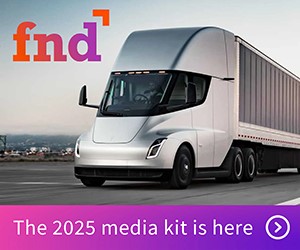DispatchTrack Reveals Five Trends that Will Drive the Logistics Market in 2022
National scale, strategic intelligence to speed delivery, and sustainability will take center stage
DispatchTrack, a global last mile logistics software-as-a-service leader that powers positive, predictable, and visible experiences for shippers, drivers, and recipients, revealed five trends that will fuel the logistics market in the coming year.
“COVID-19 dramatically altered supply chain logistics. E-commerce shifted into overdrive, while factories scaled back operations, ports worked at limited capacity, and trucker shortages wreaked havoc with getting products in the hands of consumers. Despite these problems and continuing inflation, demand shows no signs of slowing,” said Satish Natarajan, DispatchTrack co-founder and CEO. “Retailers undergoing a digital transformation to focus more on e-commerce need to take a look at new ways to ensure prompt delivery and provide a high level of customer service in order to foster brand loyalty and grow their business.”
Logistics trends for 2022 and beyond include:
- Think national for big and bulky items – Consumers can now find the ideal sofa or refrigerator with a quick internet search, and get it within days, whether the retailer is located on the other side of town or across the country. Instead of losing that sale and harming brand loyalty, companies need to do whatever is necessary to fulfill the order. That will require companies that previously were locally or regionally focused to plug into a national distribution network by either expanding their own fleets or partnering with other third party logistics (3PL) companies to handle the last mile.
- Speed trumps price – Consumers now expect grocery deliveries in under two hours and even same-day delivery of obscure products from online retailers. When comparison shopping online, consumers are more likely to put a premium on fast delivery rather than cost. Retailers need logistics solutions that can help them win the delivery race and keep their customers satisfied. Speed is going to define the winners and losers in today’s marketplace.
- AI is the driving force behind the need for speed – Early adopters of AI in supply chain management have improved logistics costs by 15%, inventory levels by 35%, and service levels by 65% according to McKinsey & Co. Much like football is a game of inches, logistics is a game of minutes. AI is the quarterback of logistics, consuming data, then recognizing the patterns across the supply chain and how they are related to outside influences, such as shift change, break time, experience level of employees, weather, and traffic. Being able to effectively analyze all of these factors will improve accuracy and shave minutes are shaved off delivery times, resulting in a competitive age.
- Middle mile is the new last mile – Typically the most complex aspect of logistics is that last mile to the customer’s door. But with the rise in e-commerce, the middle mile is becoming just as complicated. Responding to consumer demand for same- or next-day shipping, businesses now resort to less than truckload (LTL) shipping in the middle mile. The U.S Bureau of Labor Statistics data shows that LTL has outpaced long-haul trucking in both demand and cost during the past two years, and it’s likely to continue to rise along with online shopping. LTL will be critical to local fulfillment for companies competing with national brands. Businesses should consider applying last mile logistics technology to the middle mile to improve efficiency and reduce costs.
- Sustainability must become sustainable – Now is the time for the retail and supply chain sectors to follow the lead of other industries by undertaking initiatives aimed at reducing carbon emissions and protecting the environment. This may seem difficult considering the amount of resources consumed in shipping. But the move to online shopping will reduce environmental impact. A commitment to sustainability must be more than just a lofty goal. To make real change, facilities must be located closer to end users and consider using AI to help create efficient routes and more effectively load trucks to minimize gas usage.
Category: Connected Fleet News, Driver Stuff, Featured, Fleet Diagnostics & Software, Fleet Tracking, General Update, Management, News, Safety, Tech Talk, Tools










